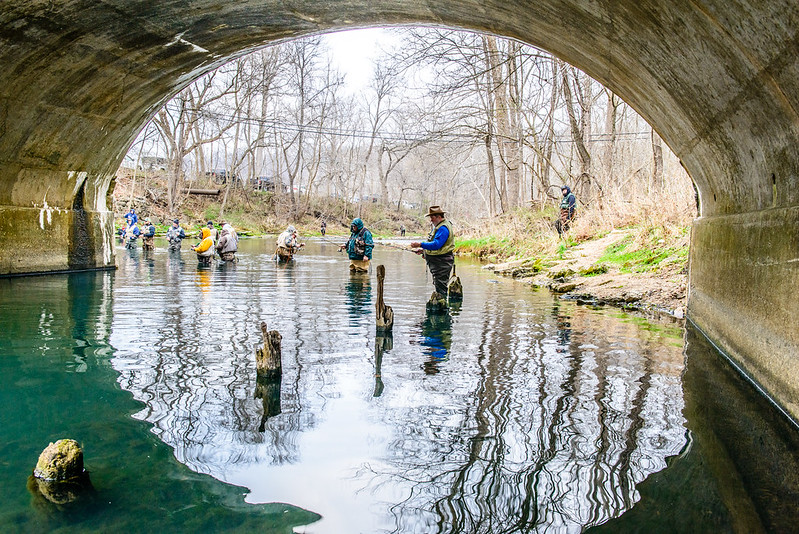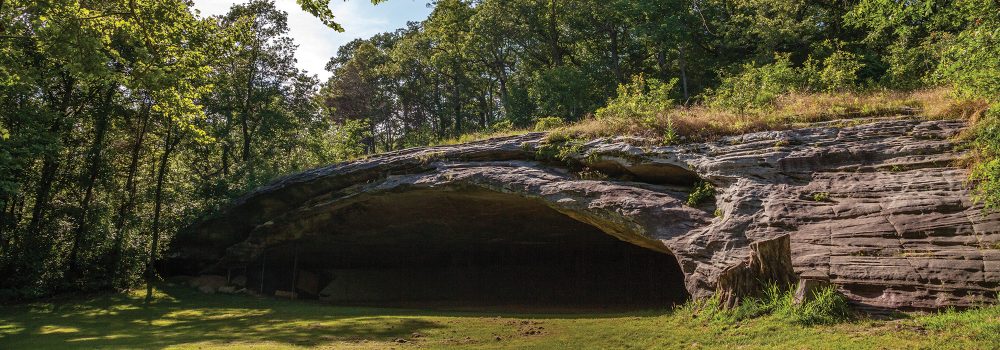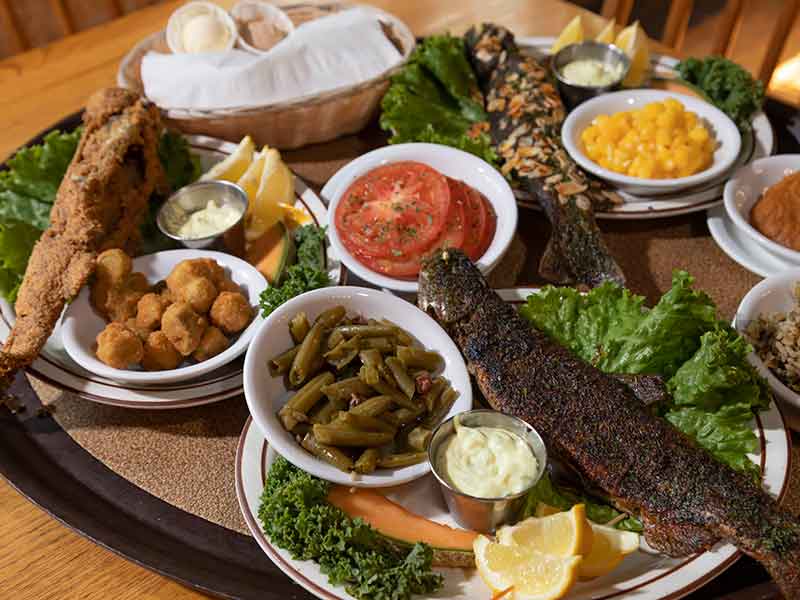Bennett Spring State Park is lovely at any time of year, but visiting in the Fall is glorious. The lodge is a rustic yet very comfortable place to stay for a few days, so you have plenty of time to take in all this State Park has to offer.
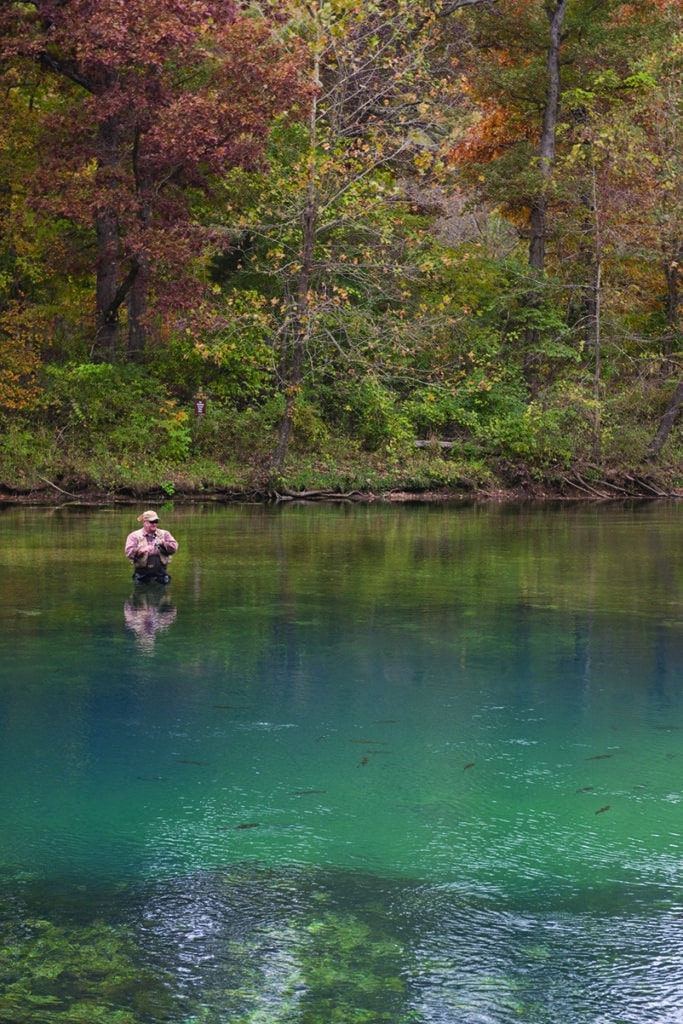
Photo credit: Missouri State Parks
FIGURES GARBED IN WADERS stroke the waters of Bennett Spring lovingly with their lines and, with rods extended, twitch the tips from time to time—homage to the sacred trout. To get to Bennett Spring, approaching from Highway 64 west of Lebanon, you wind down an entrance road past several private cottages and a tackle shop, then emerge from the upland into the hill-cradled valley.
On your right, you pass a sandstone-buttressed nature center, and the road curves over the stream on a graceful bridge of concrete and native stone, a now historic structure built in 1934 by the Civilian Conservation Corps (CCC). Upstream to your left is a low dam, successor to earlier milldams.
Over the bridge, you enter the village-like heart of the park. The lodge, containing a restaurant and meeting room, is another architectural gem from CCC days, its decorative chandeliers featuring a trout motif. In the park store, the concessionaire sells tackle and supplies to visitors and rents cabins and canoes for use on the nearby Niangua River; there is also a classroom for fishing instruction.
This was once the territory of the Osage Indians and earlier native peoples, whose legends suggest a special reverence for the spring, but they had already ceded their lands in Missouri when an early settler built a small gristmill on the spring branch.
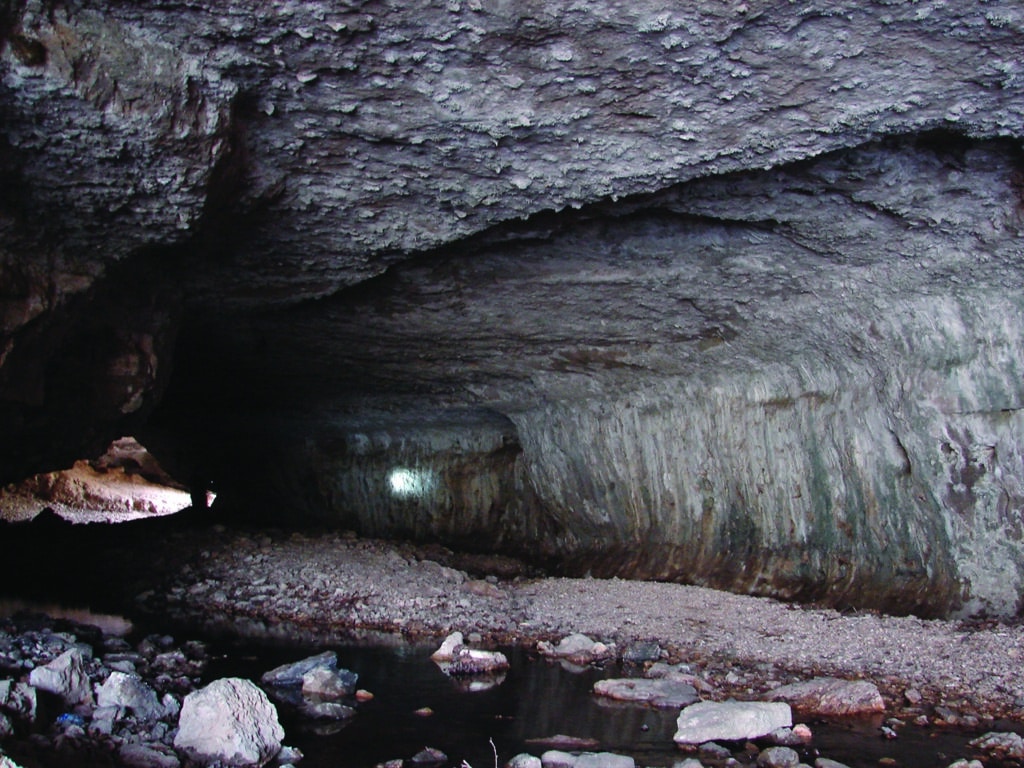
Photo Credit: Diane Tucker
The Natural Tunnel and Savanna Ridge Trails, totaling some ten miles with several loops, provide access to Spring Hollow and its woodlands seasonally abloom with wildflowers. Part of the trail goes through a twisting valley with steep cliffs, which are remainders of a collapsed cave system; the natural tunnel carved through the dolomite strata by the stream over geologic ages is in fact a cave, one that has been cut off by erosion of deeper valleys at each end.
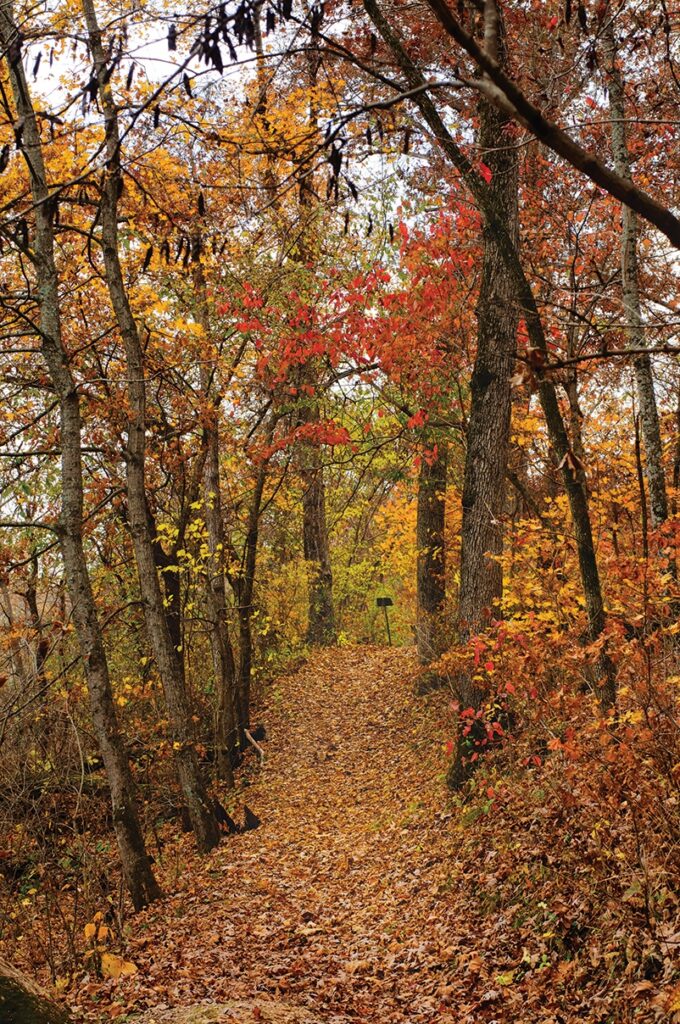
Photo Credit: Scott Myers
Anglers and their families predominate among the almost 800,000 visitors at Bennett annually, but many others come to relax in the lodge, cabins, and campgrounds, to float the Niangua River, or to hike the trails through the scenic woodlands, awash in dogwood blooms each April. Everyone who comes, though, senses that the park is here because of the spring. And so are the trout.
The spring was once known as Brice Spring. During the Civil War, Peter Bennett Jr. built a three-story mill with a timber dam and millrace.
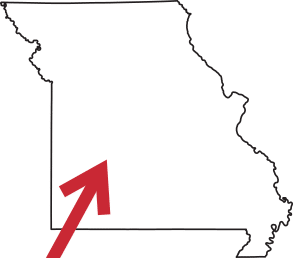
3,339 acres
Dallas and Laclede Counties
Trails • Bridge Trail (0.7 mi) • Natural Tunnel Trail (7.5 mi) • Oak Hickory Trail (0.3 mi) • Savanna Ridge Trail (2.5 mi) • Spring Trail (0.6 mi) • Whistle Trail (1 mi)
Historic Structures • CCC bridge, dam, cabins, store, post office, shelter houses, hatchery, roads, trails, and more.
Bennett Spring State Park has camping, fishing, hiking, dining, picnic area, lodging, swimming, playground, floating/kayaking, and information: visitors center, interpretive programs, or site tours.
26250 Rt 64A, Lebanon, MO
Read how you can have your own trout prepared for dinner here.
To order the States Parks book click here.
Related Posts
Bennett Spring State Park, a Haven for Folks Who Fish
The largest spring in the state, rainbow trout, a nature center, and a lodge with a restaurant are just a few of the fabulous things you will find at Bennett Spring State Park. Pack up the car and spend a weekend exploring this park.
Hiking Graham Cave State Park
Head over to Graham Cave State Park to walk in the footsteps of early Missourians.
Catch Your Own Trout at the Dining Lodge at Bennett Spring State Park
Put your fishing skills to the test at the lodge at Bennet Spring State Park, which adds an element of DIY to fresh trout.

